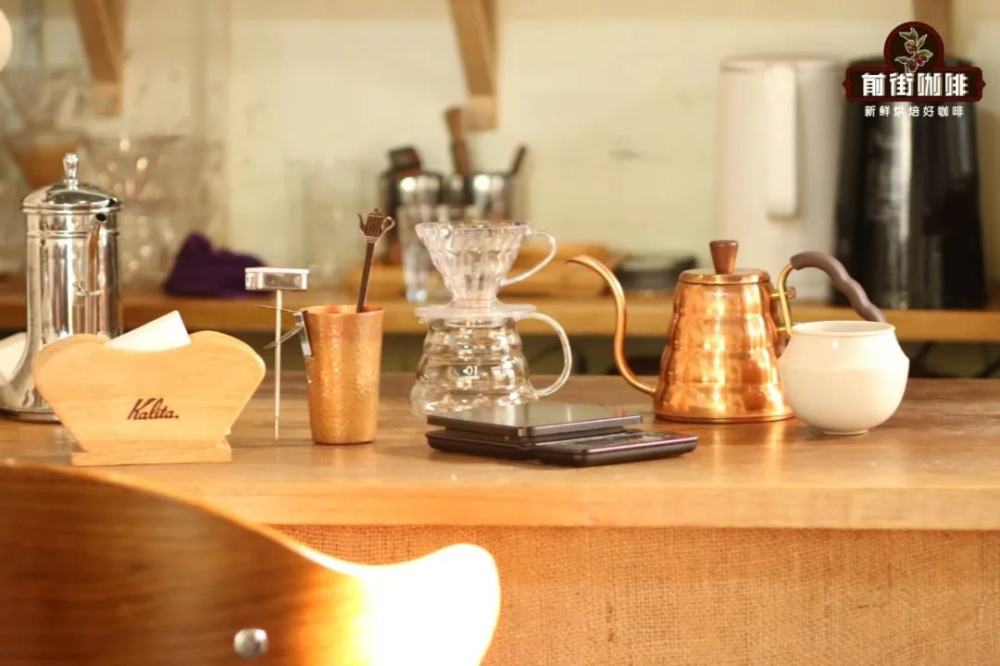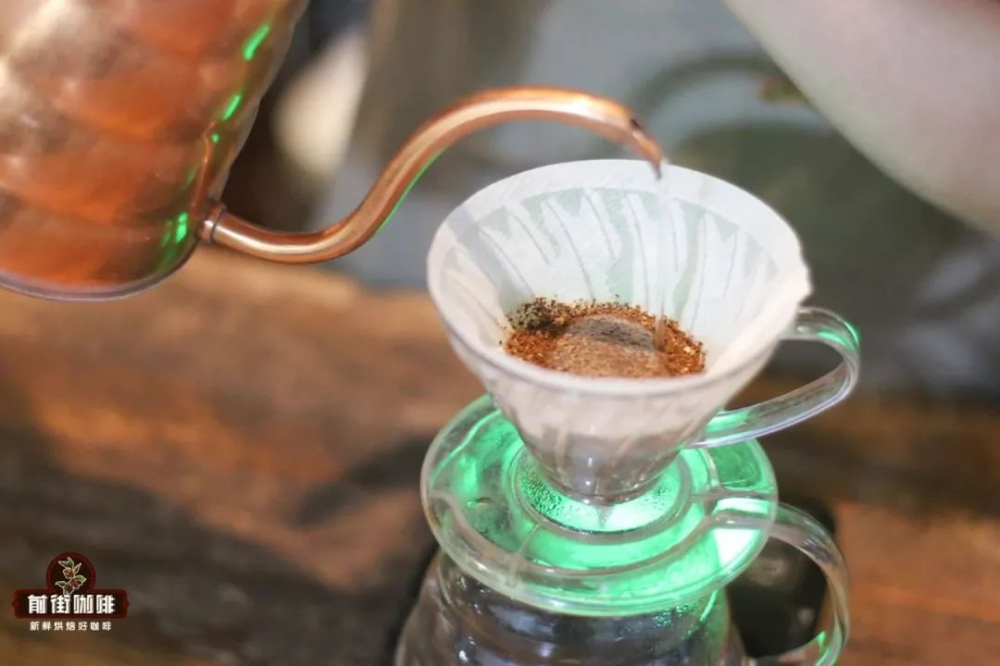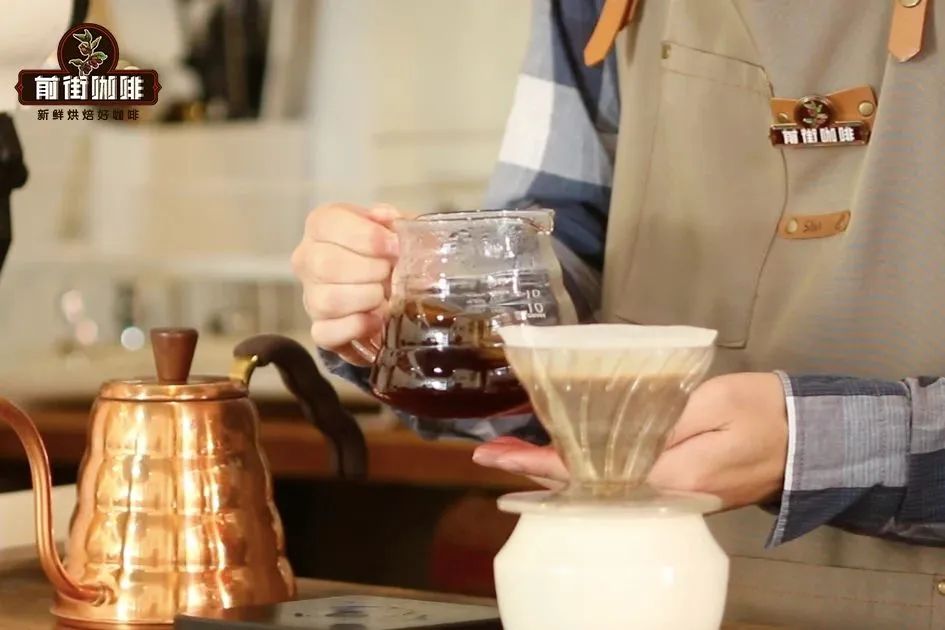Have you noticed all these details of hand-made coffee?

Many friends find it difficult to brew coffee by hand, mainly because they have clearly set up the brewing frame, but once it is brewed, the taste is always unsatisfactory. The coffee is either tasteless or too extractive, but I don't know what the problem is after thinking about it for a long time.
As the saying goes, details determine success or failure! If the general direction of the cooking parameters is fine, but the flavor is quite different from the description, it is likely that some small details of the operation have been ignored by you. The following front street sums up 10 points that beginners are most likely to overlook, which we might as well compare.

1. Wash and grind before grinding
Whether it is hand grinding or electric grinding, there will be a small amount of fine powder left on the cutter head (and powder outlet) after grinding coffee beans. If the frequency of bean grinding equipment is not high, grinding without cleaning, the fine powder accumulated in the gap is easy to oxidize to produce wood or fuel consumption smell. In order to prevent the old powder left on the knife head from being brought to the new powder and causing the coffee to taste, Qianjie will throw a few grains into the bean warehouse before grinding the coffee beans to be boiled. When using the bean grinder every day, you should also develop the good habit of "washing and grinding" before use and cleaning after use.

two。 The filter paper should fit with the filter cup.
It is believed that many people have the habit of wetting the filter paper before making coffee, first of all, to make the filter paper "close" to the filter cup, and secondly to preheat the filter cup and pot.
The front street has verified that "is it really so important for the filter paper to fit the opponent's coffee?" If the filter paper does not fit, not only will the exhaust of coffee powder during steaming be hindered, but the design of the filter cup wall will also lose its function, such as the hydrophobic diversion ribs of V60 and the smooth surface of kono. Then the uniformity of extraction and the rate of launching will also be affected. Therefore, if you want to give full play to the function of the filter cup, you should confirm whether the filter paper fits when you prepare it, otherwise you will find it "crooked" after water injection, and it will be difficult to save it.

3. Minimize the number of times of slapping the filter cup
We all know that if the powder layer is uneven, coffee is prone to uneven extraction, so we are used to flattening the powder layer surface by slapping or shaking the filter cup. However, the greater the range of slapping the filter cup (more times), the easier it is for the fine powder to fall from the gap to the bottom, resulting in blockage of the water during cooking. When adding powder, you can first aim at the center point and slowly pour out the coffee powder, so that it is not easy to be too biased to one side, and the particles can be evenly distributed at the bottom of the filter cup with a slight shake.
4. Check carefully again to see if there is a "mistake" before formal water injection
Even experienced baristas sometimes make some low-level mistakes the moment they pick up the hand pot, and the inspection before water injection can help us avoid this kind of situation. Before injecting water, please check whether the waste water in the sharing kettle is clean; whether there is enough water in the kettle; after the coffee powder is ground, return the electronic scale to zero and then pour it in to make sure that the gram weight is accurate, in case the bean grinder "eats powder" without your knowledge.

5. After confirming the temperature of the water, start cooking immediately.
Qianjie noticed that some friends would close the lid and do other things after confirming the water temperature. in fact, by the time the water was officially injected, the temperature had already dropped. Therefore, it is best to confirm the water temperature within the last two steps. For example, in the non-temperature-controlled injection kettle used in Qianjie, consider the endothermic state of the kettle, choose the water temperature higher than the boiling temperature and pour it into the hand-flushing pot, and when it slowly drops to the target temperature, start injecting water immediately.
6. Brewing strictly according to the original parameters
Before making coffee, we usually make a brewing plan, such as 15g coffee powder, 1:15 powder-water ratio, 75% pass rate of standard sieve No. 20, water temperature 88 degrees, and three stages of water injection: 30ml, 95ml and 100ml when the coffee beans are washed at the Queen's Manor in Brazil on the front street.

However, if the amount of powder is less, the total amount of water is more careless, and the time is more than 2 minutes, then the ratio of powder to water must have changed, and the coffee is likely to deviate greatly from the expectation. For beginners, it is very important to brew strictly according to the original parameters after the establishment of the cooking frame, pour as much as the target amount of water, and then remove the filter cup at the end, so as to correspond to the original extraction framework.
7. In the steaming stage, the coffee powder should be completely infiltrated.
In the eyes of most coffee people, steaming is the default action before formal extraction. Some friends pay too much attention to the amount and time of steaming, but the ability of water control still needs to be improved. after injecting the amount of steaming water, some powder layers are still in a dry state, so the steaming is not thorough enough, and the taste of coffee is naturally affected. According to previous street experience, if you can't soak the coffee powder in 2 times the amount of water (15 grams of coffee powder corresponds to 30 grams of water), you might as well pour more water. Remember, the main purpose of steaming is to soak all the coffee powder and vent the gas.

8. Instead of staring at the electronic scale, we should focus on the change of the powder layer.
Some people always stare at the data of the electronic scale when making coffee, which Qianjie thinks is a bad habit. Although numerical accuracy is also important for a cup of coffee, paying too much attention to data tends to miss more. For example, when focusing too much on the gram weight and time of water injection, causing the liquid surface to spread over the powder layer, the water will slip away directly along the diversion bone from the side, resulting in insufficient extraction. Therefore, when brewing, you should focus on the coffee powder layer rather than the electronic scale.

9. After brewing the coffee, shake it evenly before drinking.
Some anxious friends can't wait to take a sip of coffee immediately, and then find that one mouthful is light and the second is strong. The release amount and rate of flavor substances are different in each extraction stage, and when different concentrations of coffee fall into the pot, they will not mix immediately, so external force is needed to help shake the coffee liquid in the pot evenly.

10. Taste it first, and then look at the shape of the powder pit.
Maybe when you flush out a nice layer of coffee powder, you will be full of confidence and feel that this cup of coffee is stable. When it rushes out of a pink wall of uneven thickness, the subconscious thinks it should not taste good.
We should know that the powder pit we see is the state formed after all the water injected into the coffee powder has flowed, which mainly depends on the method of water injection, the launching characteristics of the filter cup, the water absorption state of coffee beans, and so on. A good-looking powder pit may not taste perfect, and a bad-looking powder pit will have good coffee. The powder pit is only a reference factor for us to judge whether the coffee brewing frame is reasonable, not the main cause, do not put the cart before the horse.

Qianjie "stingy" so many details, not to tell you that only strictly abide by them, the coffee will taste good, but hope to help you "review" their own parameters, can eliminate all kinds of unstable factors from the source, more intuitively find out the reason why the coffee is not good.
If we can grasp these small details in place, then when there is a deviation in the taste of coffee, we can directly find the answer from several major factors that affect the taste of coffee, such as grinding degree, powder-to-water ratio, water temperature, extraction time, water injection method and so on.
-END-
Important Notice :
前街咖啡 FrontStreet Coffee has moved to new addredd:
FrontStreet Coffee Address: 315,Donghua East Road,GuangZhou
Tel:020 38364473
- Prev

Picture and text teaching: how simple is the production of Avjiadot and bubbly iced American coffee?
Affogato Afjado is mainly made by pouring espresso on ice cream, and hot coffee melts the ice cream to form a thick foam at the top. Compared to calling it a coffee drink, it is actually more like a dessert. So how exactly is Afu Jiaduo made? let Qianjie be bigger.
- Next

Picture and text teaching: how to make an iced Spanish latte
Spanish latte should be a familiar "coffee + condensed milk" drink. Today, Qianjie will explain to you how to make an iced Spanish latte. First prepare a 300ml cup, a condensed milk, a milk, and some ice cubes. Step 1: pour 30g condensed soul milk into the bottom of the cup (
Related
- Beginners will see the "Coffee pull flower" guide!
- What is the difference between ice blog purified milk and ordinary milk coffee?
- Why is the Philippines the largest producer of crops in Liberia?
- For coffee extraction, should the fine powder be retained?
- How does extracted espresso fill pressed powder? How much strength does it take to press the powder?
- How to make jasmine cold extract coffee? Is the jasmine + latte good?
- Will this little toy really make the coffee taste better? How does Lily Drip affect coffee extraction?
- Will the action of slapping the filter cup also affect coffee extraction?
- What's the difference between powder-to-water ratio and powder-to-liquid ratio?
- What is the Ethiopian local species? What does it have to do with Heirloom native species?

